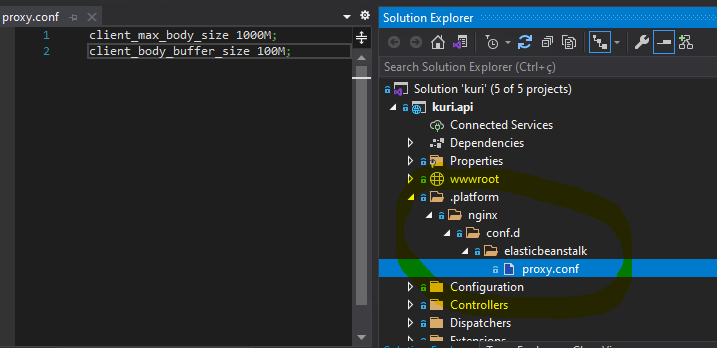Introduction :
The Docker is a operating system virtualization technology allows applications to be packaged as containerized files. This is fundamental to cloud computing, as containerized applications can run on any infrastructure, regardless of the provider.
Installation steps:
Step 1 : check the version of the OS
[root@linuxhelp ~]# cat /etc/os-release
NAME="Oracle Linux Server"
VERSION="8.4"
ID="ol"
ID_LIKE="fedora"
VARIANT="Server"
VARIANT_ID="server"
VERSION_ID="8.4"
PLATFORM_ID="platform:el8"
PRETTY_NAME="Oracle Linux Server 8.4"
ANSI_COLOR="0;31"
CPE_NAME="cpe:/o:oracle:linux:8:4:server"
HOME_URL="https://linux.oracle.com/"
BUG_REPORT_URL="https://bugzilla.oracle.com/"
Step 2 : Install yum-utils packages by using the below command
[root@linuxhelp ~]# yum install yum-utils
Last metadata expiration check: 1 day, 5:04:54 ago on Wednesday 15 December 2021 02:35:28 AM IST.
Package yum-utils-4.0.21-3.0.1.el8.noarch is already installed.
Dependencies resolved.
Nothing to do.
Complete!
Step 3 : Add Docker Repository by using the below command
[root@linuxhelp ~]# yum-config-manager --add-repo https://download.docker.com/linux/centos/docker-ce.repo
Adding repo from: https://download.docker.com/linux/centos/docker-ce.repo
Step 4 : Install Docker packages by using the below command
[root@linuxhelp ~]# yum install docker-ce docker-ce-cli
Last metadata expiration check: 0:10:54 ago on Thursday 16 December 2021 09:37:34 AM IST.
Dependencies resolved.
============================================================================================================================================
Package Architecture Version Repository Size
============================================================================================================================================
Installing:
docker-ce x86_64 3:20.10.12-3.el8 docker-ce-stable 22 M
docker-ce-cli x86_64 1:20.10.12-3.el8 docker-ce-stable 30 M
Installing dependencies:
container-selinux noarch 2:2.167.0-1.module+el8.5.0+20416+d687fed7 ol8_appstream 54 k
containerd.io x86_64 1.4.12-3.1.el8 docker-ce-stable 28 M
docker-ce-rootless-extras x86_64 20.10.12-3.el8 docker-ce-stable 4.6 M
docker-scan-plugin x86_64 0.12.0-3.el8 docker-ce-stable 3.7 M
fuse-overlayfs x86_64 1.7.1-1.module+el8.5.0+20416+d687fed7 ol8_appstream 72 k
fuse3 x86_64 3.2.1-12.0.3.el8 ol8_baseos_latest 51 k
fuse3-libs x86_64 3.2.1-12.0.3.el8 ol8_baseos_latest 95 k
libcgroup x86_64 0.41-19.el8 ol8_baseos_latest 70 k
libslirp x86_64 4.4.0-1.module+el8.5.0+20416+d687fed7 ol8_appstream 70 k
slirp4netns x86_64 1.1.8-1.module+el8.5.0+20416+d687fed7 ol8_appstream 51 k
Transaction Summary
============================================================================================================================================
Install 12 Packages
Total download size: 90 M
Installed size: 377 M
Is this ok [y/N]: y
Downloading Packages:
Step 5 : start the Docker services by using the below command
[root@linuxhelp ~]# systemctl start docker
Step 6 : Enable the Docker service by using the below command
[root@linuxhelp ~]# systemctl enable docker
Created symlink /etc/systemd/system/multi-user.target.wants/docker.service → /usr/lib/systemd/system/docker.service.
Step 7 : check the Docker status by using the below command
[root@linuxhelp ~]# systemctl status docker
● docker.service - Docker Application Container Engine
Loaded: loaded (/usr/lib/systemd/system/docker.service; enabled; vendor preset: disabled)
Active: active (running) since Thu 2021-12-16 09:55:32 IST; 27s ago
Docs: https://docs.docker.com
Main PID: 10910 (dockerd)
Tasks: 7
Memory: 30.5M
CGroup: /system.slice/docker.service
└─10910 /usr/bin/dockerd -H fd:// --containerd=/run/containerd/containerd.sock
Step 8 : Download and Run the Docker image from Online Docker Library
[root@linuxhelp ~]# docker run hello-world
Unable to find image 'hello-world:latest' locally
latest: Pulling from library/hello-world
2db29710123e: Pull complete
Digest: sha256:cc15c5b292d8525effc0f89cb299f1804f3a725c8d05e158653a563f15e4f685
Status: Downloaded newer image for hello-world:latest
Hello from Docker!
This message shows that your installation appears to be working correctly.
To generate this message, Docker took the following steps:
1. The Docker client contacted the Docker daemon.
2. The Docker daemon pulled the "hello-world" image from the Docker Hub.
(amd64)
3. The Docker daemon created a new container from that image which runs the
executable that produces the output you are currently reading.
4. The Docker daemon streamed that output to the Docker client, which sent it
to your terminal.
To try something more ambitious, you can run an Ubuntu container with:
$ docker run -it ubuntu bash
Share images, automate workflows, and more with a free Docker ID:
https://hub.docker.com/
For more examples and ideas, visit:
https://docs.docker.com/get-started/
By this the installation of Docker on Oracle Linux has been completed
Good book to avoid all this mess --> https://amzn.to/3Rb9pUq


